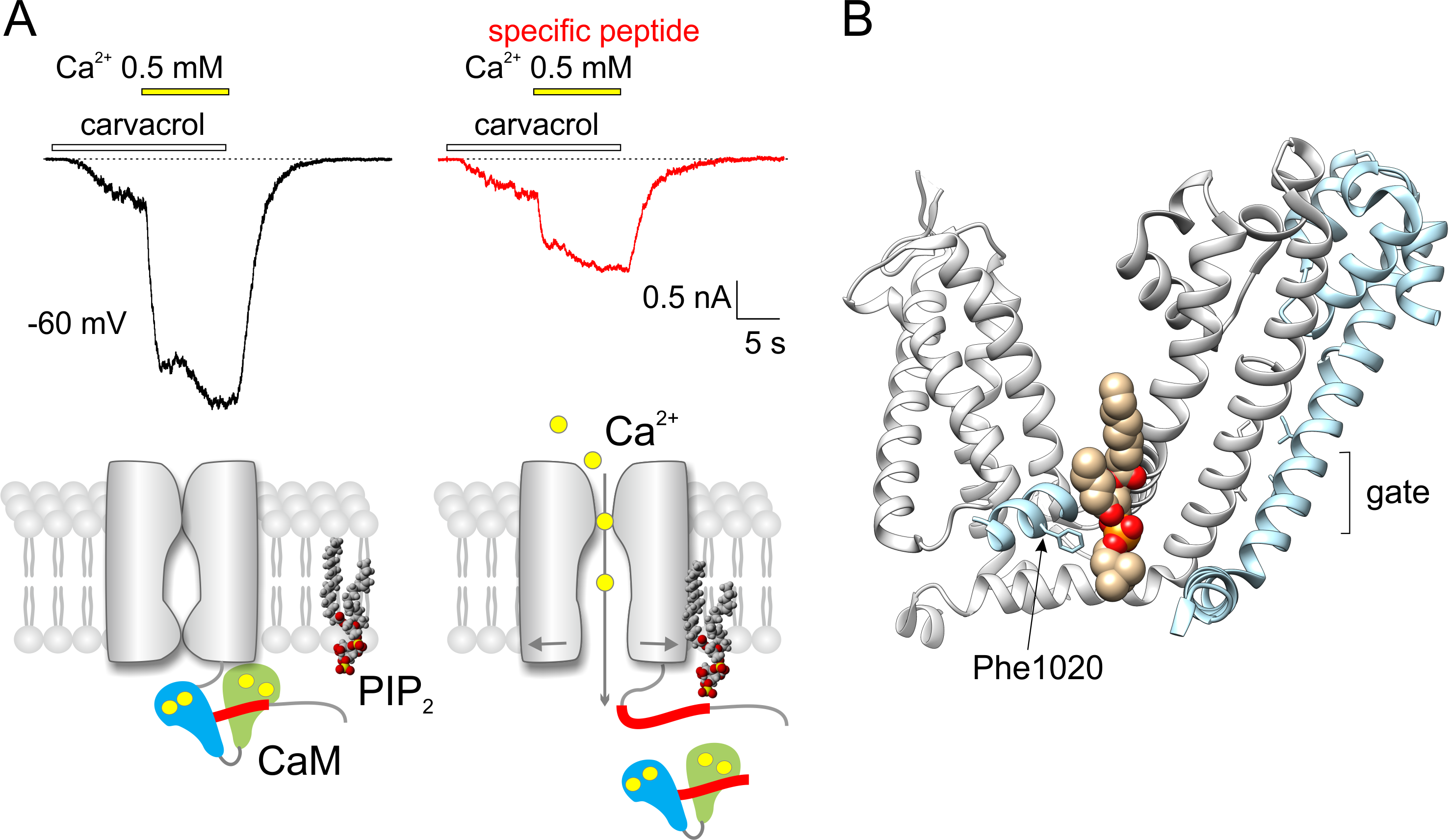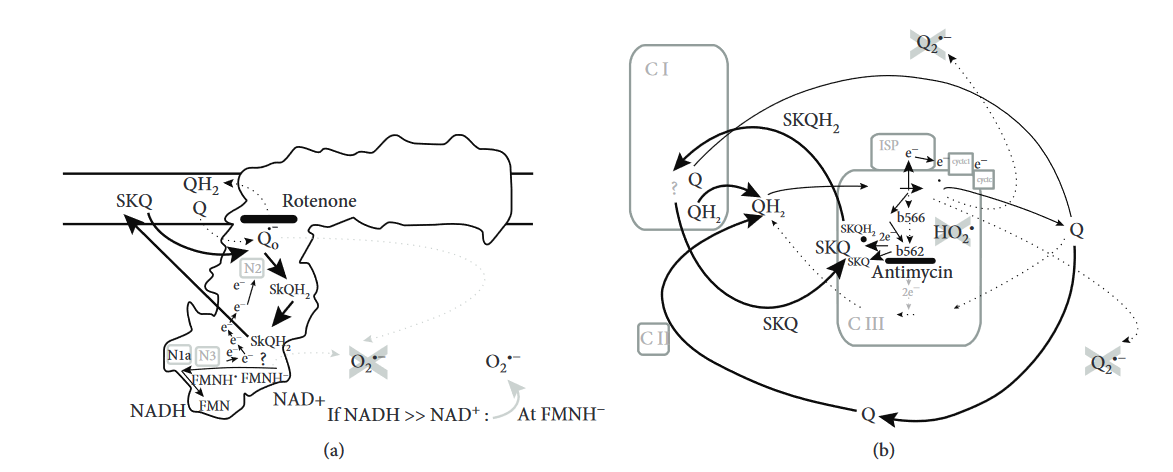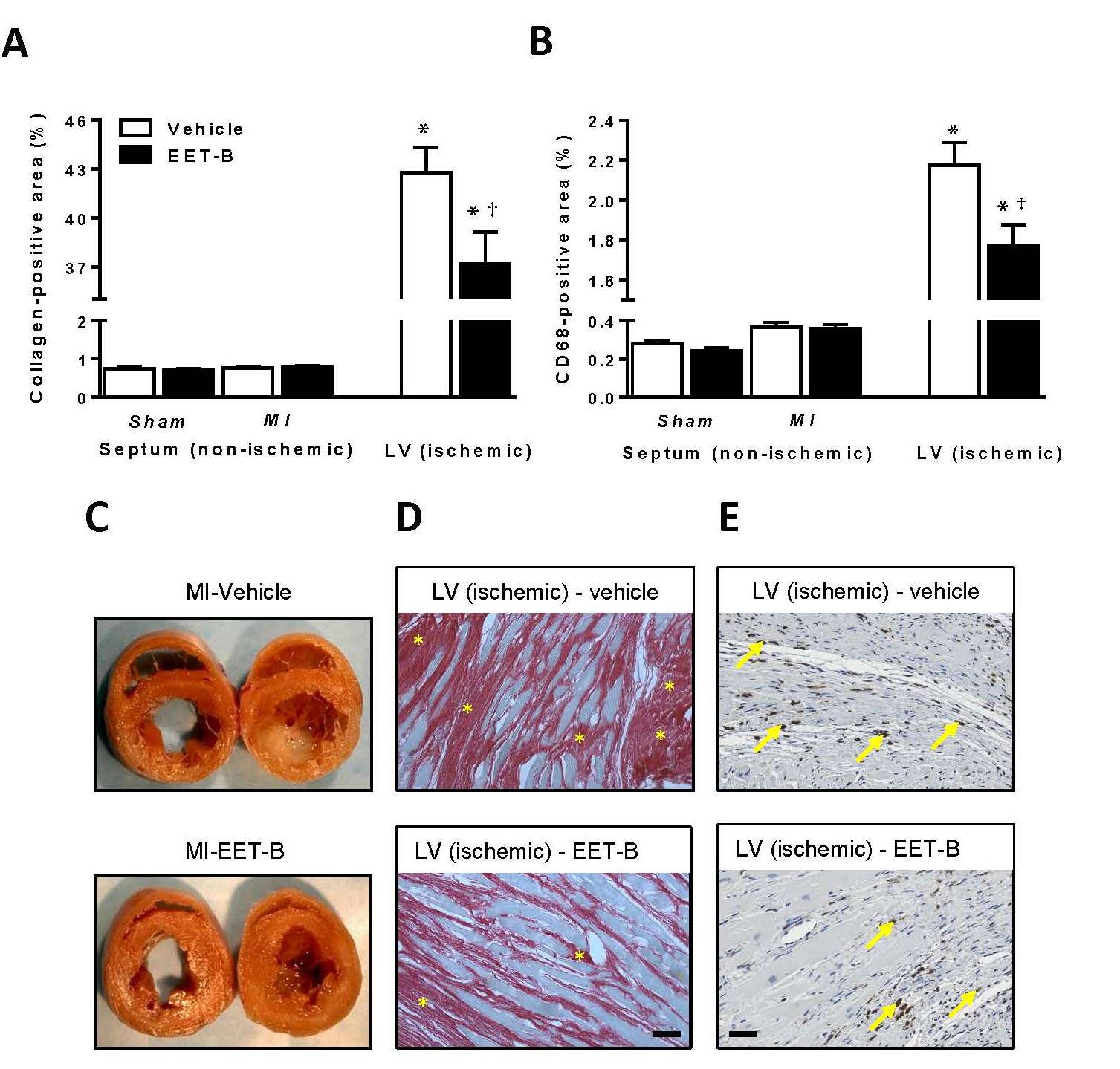Elucidation of TRPA1 activation mechanisms may help to understand the pathophysiology of chronic pain (3.2. 2020)
A plethora of serious diseases is followed by chronic pain the molecular mechanisms of which are not fully unraveled. The research on TRPA1 ion channel, which is involved in these mechanisms, is conducted by the researchers from the Laboratory of Cellular Neurophysiology of the Institute of Physiology CAS. In collaboration with the laboratory CBMN from the University of Bordeaux they proved that the activity of human TRPA1 is significantly regulated by membrane phospholipids at negative membrane potentials. They succeeded in identifying the binding site of TRPA1 channel, which interacts with phospholipids at low concentrations of calcium ions. At higher concentrations of calcium ions, the same region represents the binding site for a regulatory protein calmodulin, which modulates the TRPA1 channel in an activity-dependent manner. These new findings suggest that the correct phospholipid composition of the plasma membrane is important for TRPA1 activation under physiological conditions. Membrane phospholipids help to stabilize the interface between TRPA1 subunits to maintain the transduction of signals into the channel opening.

(A) Electrophysiological recordings of TRPA1 channel‘s responses to carvacrol (100 µM) and to elevated concentration of calcium ions (from 0 to 0.5 mM). Recordings from two F11 cells recorded with a pipette filled with control solution (left) and solution with the specific peptide T1003-P1034 added (right). Lower, there is a suggested mechanism of competition between calmodulin (CaM) and phospholipid (PIP2) for the binding site of TRPA1. (B) The binding site for phospholipids in the region of two neighboring subunits of TRPA1 channel. Only the transmembrane part of the protein, which contributes to the binding and transduction of signals into the channel gate, is shown (PDB code of the structure 6pqq). The role of phenylalanine Phe1020 in the interaction was revealed in the study.
MACIKOVA L, SINICA V, KADKOVA A, VILLETTE S, CIACCAFAVA A, FAHERTY J, LECOMTE S, ALVES ID, VLACHOVA V: Putative interaction site for membrane phospholipids controls activation of TRPA1 channel at physiological membrane potentials. The FEBS Journal 286: 3664-3683, 2019.
Innovative method of the Forhkead transcription factor FOXO3 regulation (29.1. 2020)
The study published in prestigious journal eLife identifies small molecule compounds that interact with the Forkhead box O3 transcription factor (FOXO3) and modulate its activity.
FOXO3, with the characteristic fork head DNA-binding domain is part of the O subclass of the forkhead family of transcription factors. These transcription factors have important roles in mammalian cells in regards to regulating cell homeostasis, differentiation, longevity and steer cell death. The activity of FOXO3 in particular contributes to therapy-resistance programs that protect cancer cells during chemo and radiotherapy. Recent studies have also found the DNA-binding domain (DBD) of FOXO aid protein-protein interactions with other key regulators of longevity and death, and drug resistance. A reversible inhibition of FOXO3 activity by small compounds thereby might boost anti-tumor immune responses.
In order to inhibit the FOXO3 activity, it was first necessary to identify small molecule compounds that could block the interaction between FOXO3 and DNA. Using the structural data of FOXO3 DBD and FOXO4 DBD, the researchers developed six different pharmacophore models that were used for in silico screening of small molecule compound databases. Selected compounds were then tested for their ability to inhibit FOXO3 function both in vitro, and in cancer cell lines. The interactions of these compounds with FOXO3 DBD were assessed using NMR spectroscopy and docking studies.
The teams of Dr. V. Obšilová from the Institute of Physiology CAS in BIOCEV and prof. T. Obšil from the Faculty of Science, Charles University with the team of prof. M. J. Ausserlechner from the Medical University of Innsbruck, Austria identified the compounds S9 and its oxalate salt S9OX as compounds able to inhibit the FOXO3 activity in cancer cells. They also proposed that due to their mode of binding to FOXO3 DBD, these compounds may also interfere with protein-protein interactions of FOXO3. The advantage of these compounds is the strict control of application-dose and -time and the fact that they are not immunogenic allowing repeated applications – so dose- and application time can be adjusted to damage cancer cells or boost anti-cancer immunity, but also limit unwanted side effects of FOXO-inhibition on stem cells and other somatic tissues. Future research will be focused on investigation whether or not S9 can be used as a chemical foundation for developing FOXO-regulatory compounds that would control the functions and target gene subsets of FOXO transcription factors.

Compounds S9 blocks the DNA binding surface of Forkhead transcription factor FOXO3. The figure shows the structural model of the DNA-binding domain of FOXO3 with bound compound S9 based on data from NMR measurements and docking simulations.
Hagenbuchner, J.+, Obšilová, V.+, Kaserer, T.+, Kaiser, N., Rass, B., Pšenáková, K., Dočekal, V., Alblová, M., Kohoutová, K., Schuster, D., Aneichyk, T., Veselý, J., Obexer, P., Obšil, T.*, Ausserlechner, M. J.* Modulating FOXO3 transcriptional activity by small, DBD-binding molecules. eLife. 2019, 8(Dec 4), e48876. doi: 10.7554/eLife.48876
Transcription factor Hif-1a is required for the correct development of the sympathetic nervous system and innervation of the heart (16.1. 2020)
Hypoxia-inducible factor 1 (Hif-1) is the master regulator of transcriptional responses of cells to decreased oxygen availability. Research teams of the Institutes of Biotechnology and Physiology CAS and the 1st Medical Faculty UK showed that genetic mutation of the Hif-1a gene suppresses the embryonic development of preganglionic and postganglionic neurons of the sympathetic nerve system and negatively affects sympathetic innervation of the heart that plays a primary role in the regulation of heart rate and contractility. Mice with conditional deletion of Hif-1a gene exhibited coronary artery anomalies and decreased cardiac contractile function. These data indicate that deregulation of the transcription factor Hif-1a can result in serious cardiovascular diseases associated with the autonomic nervous system dysbalance and open the way to a development of new therapeutic strategies.

Impaired sympathetic innervation of hearts with Hif-1a deletion (Hif1aCKO): Immunohistochemical staining of tyrosine hydroxylase (TH) in posterior view of hearts, and quantification of TH-positive fibers per ventricle area in E16.5 control and Hif1aCKO littermates.
Bohuslavová, Romana - Čerychová, Radka - Papoušek, František - Olejníčková, Veronika - Bartoš, M. - Goerlach, A. - Kolář, František - Sedmera, David - Semenza, G.L. - Pavlínková, Gabriela: HIF-1 alpha is required for development of the sympathetic nervous system. Proceedings of the National Academy of Sciences of the United States of America. Roč. 116, č. 27 (2019), s. 13414-13423. ISSN 0027-8424, IF: 9.580, 2018. DOI: 10.1073/pnas.1903510116
The resistance of pancreatic beta cells to oxidative stress, which accompanies diabetes type 2, can be increased by mitochondria-targeted antioxidants (15.1. 2020)
Increased blood glucose induces secretion of the hormone insulin in β cells of Langerhans islets in the pancreas. his response is regulated by redox signalization, where a slight increase of reactive oxygen species (ROS) serves as a messenger for the regulation of protein pathways leading to the secretion of insulin from insulin granules in β cells. On the contrary, excessive production of ROS causes pathological oxidative stress which accompanies many diseases such as diabetes type 2. Oxidative stress can be suppressed by enhancing antioxidant defense. Mitochondria are important energy factories of the cells and are also one of the main sources of ROS. In the present paper, we tested the effect of new antioxidant molecules, namely SkQ, S3QEL and S1QEL, which target the sites of ROS production in mitochondria. We uncovered the detailed mechanism of their effect in various sites of mitochondria, where they specifically prevent ROS formation and thus show antioxidant role. However, they can also have pro-oxidative properties. This is dependent on energy metabolism of the cell and thus substrate availability (for example glucose). As an example, SkQ antioxidant shows an antioxidant property when a cell has excessive energy substrate supply which happens in vivo after a meal, i.e. postprandial. If there is a shortage of energy substrate, happening in vivo during fasting, SkQ behaves in short-term pro-oxidatively and can even increase already established oxidative stress. Detailed knowledge of the activity of these selected antioxidant in pancreatic β cells can be used in diabetes treatment.

Figure of possible SkQ activity: Suggested mechanisms for antioxidant action of matrix-targeted antioxidant SkQ: (a) antioxidative two-electron reduction of SkQ to SkQH2 plus regeneration (oxidation of SkQH2) within the mitochondrial electron transport complex I, based on reference [1]; (b) antioxidative two-electron reduction of SkQ to SkQH2 within complex III and regeneration at the complex I, based on reference [1]
Plecitá-Hlavatá; Lydie - Engstová; Hana - Ježek; Jan - Holendová; Blanka - Tauber; Jan - Petrásková; Lucie - Křen; Vladimír - Ježek; Petr . Potential of Mitochondria-Targeted Antioxidants to Prevent Oxidative Stress in Pancreatic beta-cells . Oxidative Medicine and Cellular Longevity. 2019; 2019(2019)); 1826303 . IF = 4.868.
A promising pharmacological approach in cardiovascular disease prevention (9.7. 2019)
Epoxyeicosatrienoic acids (EETs), cytochrome P450 epoxygenase metabolites of arachidonic acid, represent a promising pharmacological approach in cardiovascular disease prevention. In our study, cardioprotective effects of a novel, stable and orally active agonistic 14,15-EET analog EET-B on the progression of post-ischemic heart failure was examined in spontaneously hypertensive rats (SHR), a pre-clinical rodent model of human essential hypertension. SHR were subjected to myocardial infarction and the effects of continuous EET-B treatment before and after MI on post-ischemic left ventricular function, myocardial fibrosis and inflammation were analyzed. As EET-based therapies can attenuate the progression of HF by mechanisms involving activation of heme oxygenase-1, its immunopositivity in viable myocytes of the ischemic myocardium was also determined. We demonstrated that EET-B treatment improved post-ischemic left ventricular function, markedly increased heme oxygenase-1 immunopositivity in cardiomyocytes subjected myocardial infarction and reduced cardiac inflammation and fibrosis. These findings suggest that EET analog EET-B has beneficial therapeutic actions to reduce remodeling in SHR subjected to myocardial infarction.

8.Neckář, Jan - Khan, M. A. H. - Gross, G. J. - Cyprová, Michaela - Hrdlička, Jaroslav - Kvasilová, A. - Falck, J. R. - Campbell, W. B. - Sedláková, Lenka - Škutová, Šárka - Olejníčková, Veronika - Gregorovičová, Martina - Sedmera, David - Kolář, František - Imig, J. D. Epoxyeicosatrienoic acid analog EET-B attenuates post-myocardial infarction remodeling in spontaneously hypertensive rats. Clinical science. Roč. 133, č. 8 (2019), s. 939-951. ISSN 0143-5221, IF: 5,237 (2018).
Load next




